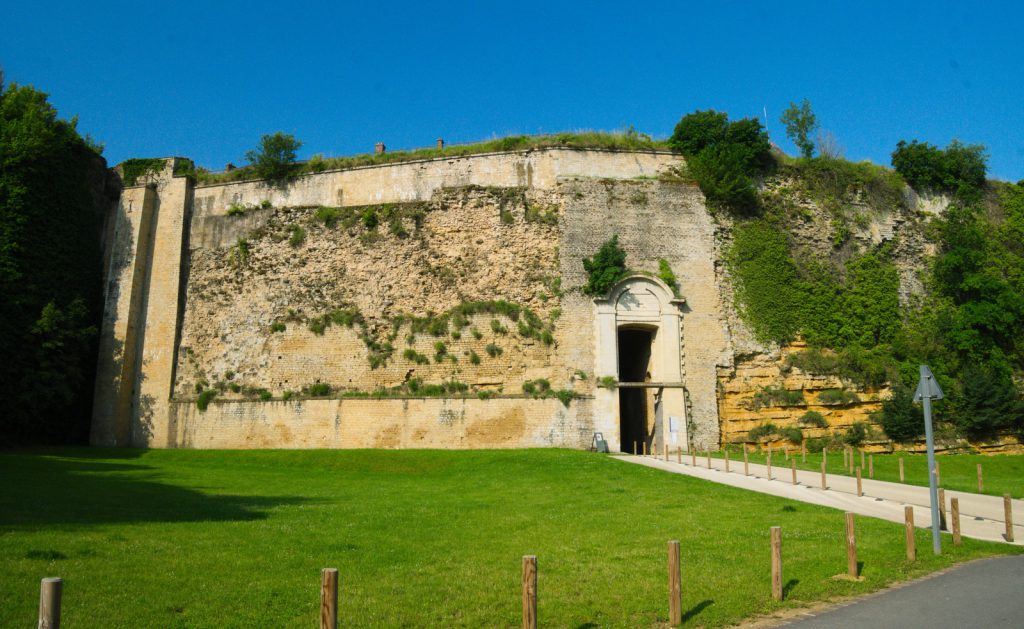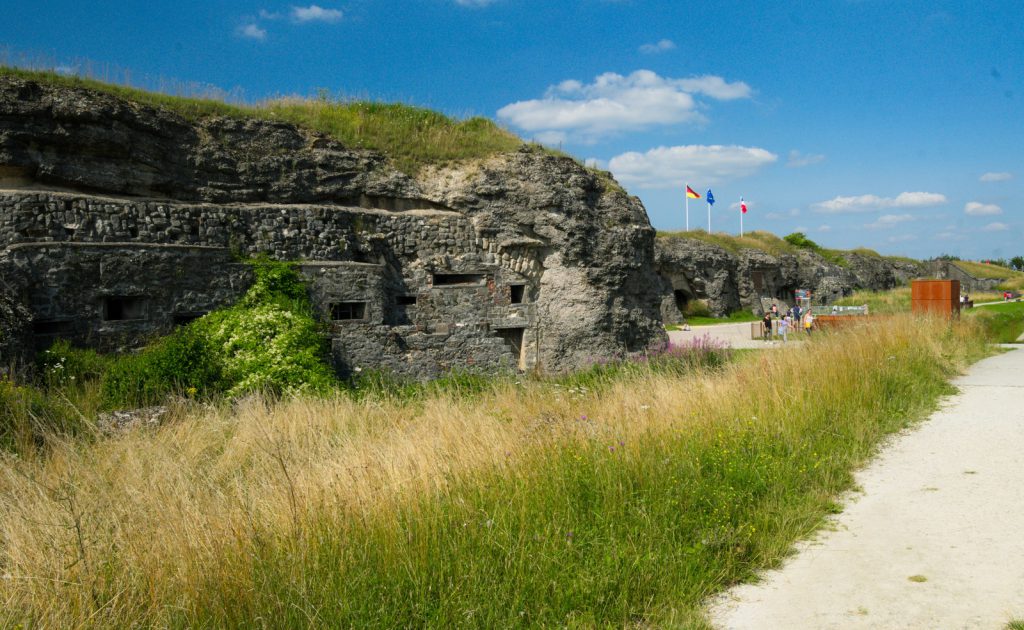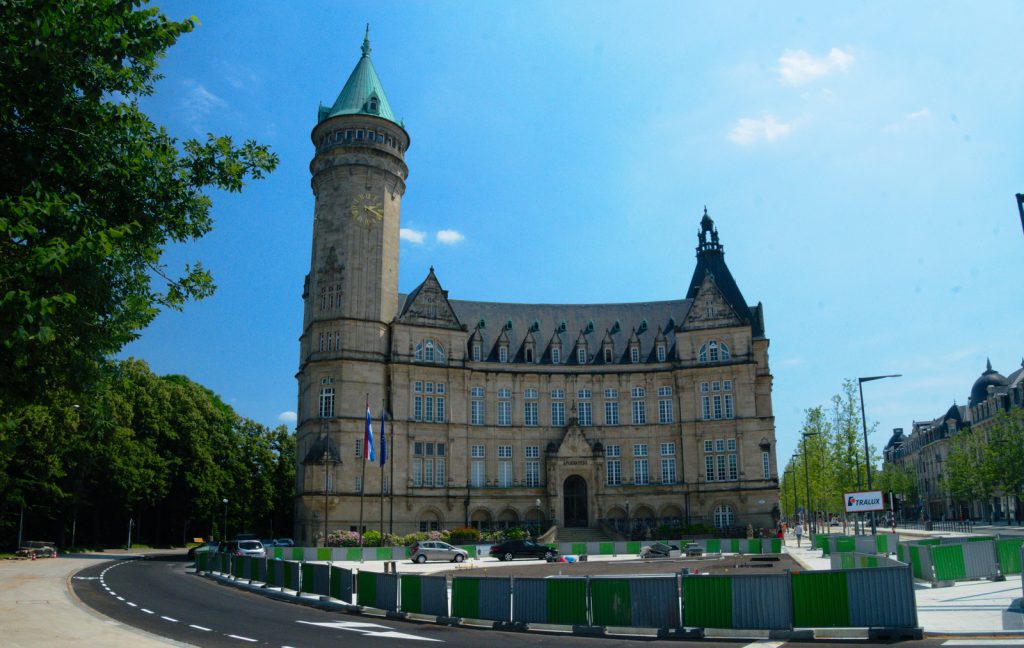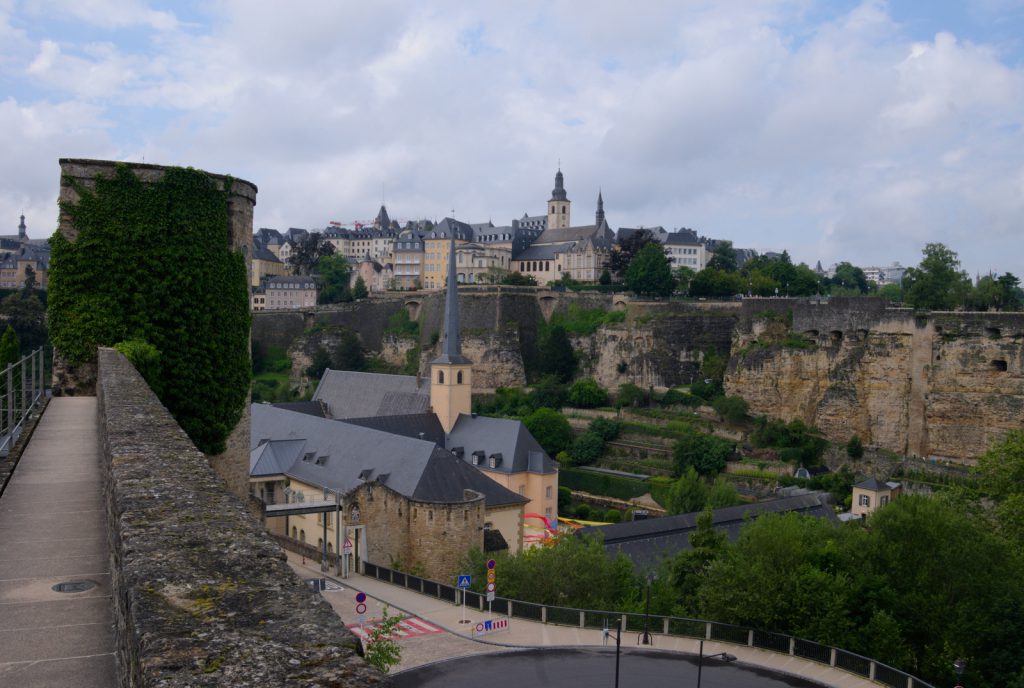Hauts de France & Grand Est
Across the Belgium border appeared much more open landscapes, fields, pastures and forests. The landscape also got slightly hilly – but so far the hills have remained low. Exposed brick houses, which were typical around the coast, were in more remote villages increasingly being replaced by houses built of stone, as if cut from typical pictures of the French countryside. The river Meuse swirls through the landscape, at the moment it was full to the brim in most places, and along the river I continued to the southeast, in parallel with the border of Belgium.
Due to proximity of this particuar border I was gradually more often spottig concrete bunkers in the fields. And then I got to the massive fortress from the Prussian-French war in Sedan and the remains of a World War I fortress in Douaumont on the ridge above Verdun.
Luxembourg
To avoid the flooded areas, I came to Luxembourg from the south, directly to the capital. Some differences compared to France were visible right at the border: more expensive cars, probably cheaper gasoline (there were ten gas stations next to each other right at the border). The city center is built as a fortress above the deep twisted canyon of the river Alzette and its tributary Pétrusse. In the centre there is still a palace of the Grand Duke, and then mainly expensive boutiques, seemingly aimed largely at wealthy Russian tourists. Down by the river are former poorer neighborhoods, including the enclosed part of the Rham, where orphans and other unwanted elements used to be secluded, while today it is one big home for the elderly. Beyond the river are modern neighborhoods, on the opposite hill is the European Quarter. That is a large office district with EU offices, but now during summer it is an area without a single living person anywhere and the district thus appears to be a ghost town.
















































